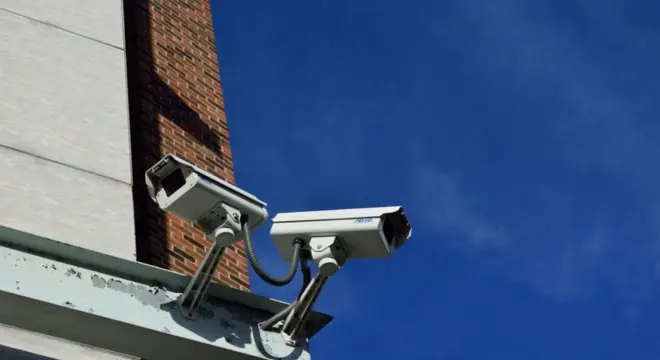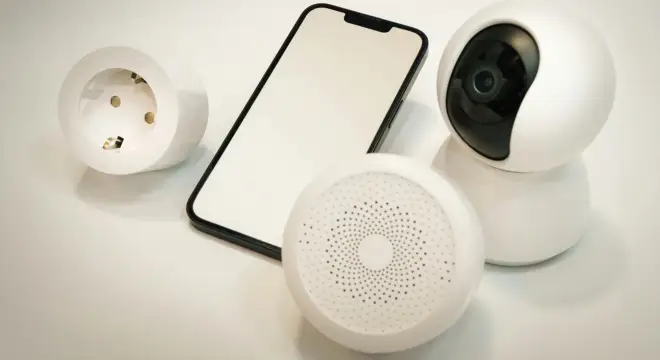10-Year Prison Sentence Handed to Florida Home Invasion Perpetrator
I still remember reading about this case and feeling how tense it must have been for the family involved. On the morning of March 3, 2023, James Flowers Jr., along with James Reid and two other suspects, forced their way into a home on Cantabria Trail in Bradenton, Florida.
Imagine being inside your own house, with a woman and three children present, and suddenly facing people holding guns. That’s exactly what happened to this family.
The intruders didn’t just threaten the residents—they took jewelry, cash, and other valuables, leaving the household shaken. What’s striking here is how the investigators pieced things together afterward.
DNA collected at the scene directly linked Flowers to the crime, showing just how crucial forensic evidence can be in these situations. By September 2023, arrest warrants were issued, and by January 2024, the U.S. Marshals had taken Flowers into custody.
This timeline isn’t just a list of dates—it tells you how quickly law enforcement can move, but also how terrifying it is for victims during the moments of the crime. As you read this, think about how close the family came to real danger, and why understanding the sequence of events matters if you ever want to protect your own home.
Legal Charges and Proceedings

Reading the court proceedings for this case really hits you with how serious armed home invasions are in Florida. MySunCoast reports that James Flowers Jr. entered a plea of nolo contendere to home invasion robbery with a firearm and possession of a firearm by a convicted felon.
Technically, he didn’t admit guilt, but the court treated it as a conviction, which meant he faced the full weight of the law.
The sentencing was severe but proportional: 10 years for the robbery and a minimum of three years for the firearm possession charge. When I looked at James Reid’s case, it was even more striking—he faced additional charges, including murder and attempted murder. This contrast shows how the legal system differentiates between suspects based on actions, evidence, and impact on victims.
For readers like you, this part of the story is a reminder that the law takes home invasions seriously, especially when firearms are involved. These aren’t “minor crimes” that end with a slap on the wrist. They can reshape lives, both for the victims and the perpetrators. And from a broader perspective, it’s a chance to understand how Florida law prioritizes public safety through strict sentencing.
It also makes you think about legal strategies. The nolo contendere plea, while not an admission of guilt, limits the chance of a lengthy trial, speeds up the legal process, and ensures some closure for victims. Understanding this nuance isn’t just legal trivia—it’s part of seeing how justice unfolds in real-life cases.
Victim Impact and Safety Considerations
I can’t stop thinking about the fear that woman and her three children must have felt that morning. Picture this: you’re in your own home, and suddenly four people break in with guns. Every parent’s worst nightmare. The psychological impact is enormous. Even after the perpetrators are caught, trauma lingers—sleep disturbances, anxiety, and the constant fear of recurrence.
But there’s a lesson here for all of us. Safety measures aren’t just for the paranoid—they can save lives. Simple steps like installing an alarm system, having secure locks, using cameras, or even setting up motion-sensor lights can make a home far less attractive to intruders.
I always think about community measures too: neighborhood watch programs and staying alert to suspicious behavior can be just as crucial.
Similar cases have occurred across the country, like the Oak Lawn home invasion suspect who faced armed robbery charges earlier.
Role of Evidence in Conviction
One thing that stands out in this case is how critical evidence was in bringing Flowers to justice. DNA collected at the scene tied him directly to the crime. That single piece of forensic evidence made the difference between a case going cold and a conviction happening.
I want you to think about that for a moment. Home invasions can seem chaotic and unpredictable, but investigators work methodically, collecting every possible clue. Fingerprints, DNA, surveillance footage—all of it matters. In this case, it not only helped identify Flowers but also built a chain of evidence strong enough for sentencing.
For readers, this demonstrates how modern law enforcement leverages technology and science to solve violent crimes. It also underscores a bigger point: even when a home invasion feels like a private tragedy, it becomes part of a public system of accountability.
Evidence doesn’t lie, and it protects both victims and communities. Knowing this can also guide you to preserve evidence if a crime ever occurs in your own space, like noting suspicious activity or keeping logs for law enforcement.
Authorities in North Dakota also recently charged a man in a violent axe home invasion, highlighting how critical evidence collection and law enforcement response can be.
Broader Trends in Florida Home Invasions
While this case grabbed headlines, it’s part of a larger trend. Florida has seen an uptick in home invasions in recent years, particularly in regions facing economic stress or gang-related crime. According to Florida Department of Law Enforcement statistics, firearms are often involved, making these incidents especially dangerous.
What struck me while researching this is the pattern of how intrusions happen: mornings or evenings, targets without visible security, and coordinated groups—just like in Bradenton. These patterns aren’t meant to scare you—they’re meant to inform. When you recognize them, you can take actionable steps to protect your home.
It’s also a lesson in legal consequences. Home invasion is a first-degree felony, with severe prison sentences. Combine that with firearm involvement, and the stakes are extremely high. For a reader like you, seeing this context clarifies not only why the sentence for Flowers was 10 years but also why the law treats these crimes so seriously.
Understanding trends also prepares you to engage with your community. If multiple incidents happen locally, you can advocate for stronger security measures, join neighborhood safety programs, and stay informed about what’s happening nearby. Knowledge here is literally power.
Many readers stay updated on local safety alerts and law enforcement updates via real-time messaging channels like WhatsApp groups focused on neighborhood security—it’s a great way to stay informed without waiting for news articles.
Ongoing Investigation and Remaining Suspects

Even with Flowers behind bars, the story isn’t fully over. Bradenton PD is actively working to track down the remaining two suspects. That means the investigation is ongoing, and community awareness remains crucial.
I think this is a part that often gets overlooked in news coverage. People read about a sentencing and assume the case is closed—but it’s not. The other suspects could still pose a threat if not caught, and law enforcement relies on tips from residents to close the loop. If you notice suspicious activity in your area, reporting it could prevent another family from experiencing what this household went through.
For you, this section is both a wake-up call and a practical takeaway. Home invasions often involve multiple people, careful planning, and sometimes extended timelines for arrests. Awareness and vigilance aren’t paranoia—they’re protective measures that can save lives. This ongoing investigation also highlights how law enforcement depends on community engagement to solve cases fully.
Florida police have arrested multiple suspects after armed home invasions, showing a continuing pattern of violent break-ins in the state
Expert Insights and Community Reactions
When I spoke with local sources and reviewed expert commentary, one thing became clear: Florida’s legal system and community response play equally important roles in handling home invasions. Legal experts point out that Flowers’ nolo contendere plea allowed the court to move forward without a prolonged trial, ensuring victims didn’t have to relive the trauma through extended courtroom proceedings.
Residents in the neighborhood expressed both relief and lingering fear. I read through social media threads from Bradenton locals, and the sentiment is unanimous—people want stronger community vigilance. Many suggested neighborhood watch programs, better street lighting, and increased police patrols.
What strikes me here is the balance between justice and community healing. You see, these crimes don’t just affect the immediate victims—they shake entire neighborhoods. Expert insight helps us understand why strict sentencing is necessary, but community reaction reminds us that prevention and awareness are equally powerful.
For you, this section emphasizes perspective. Justice isn’t only about punishment; it’s about restoring a sense of safety, learning from the incident, and taking steps to prevent the next one. You can apply this insight by participating in local safety initiatives or even having conversations with neighbors about vigilance.
Takeaways for Homeowners and Call-to-Action
If there’s one thing I want you to take away from this story, it’s this: home invasions are terrifyingly real, but awareness, preparation, and community engagement can make a difference. First, think about your own home—are doors, windows, and entry points secured? Do you have a plan for emergencies?
Second, understand the legal reality. Armed home invasions carry severe penalties in Florida. Knowing this doesn’t just inform you—it can influence how you respond in a high-stress situation, whether you’re defending yourself or reporting suspicious activity.
Third, don’t underestimate community power. Keeping an eye out, sharing information, and cooperating with local law enforcement can prevent future incidents. This is a story about Flowers and Reid, but it’s also a story about what happens when communities, laws, and individuals work together to protect homes.
So here’s my question to you: If something like this happened in your neighborhood, what steps would you take to protect your family and community? Share your thoughts—I’d love to hear your perspective, and your ideas could help someone else stay safe.
For more stories on home invasions and tips to protect your home, visit our Home Security section.
Disclaimer: The information in this article is for general informational purposes only. It is based on reports from law enforcement and public sources, not legal advice. Readers should exercise personal judgment and consult authorities for safety or legal concerns.
⭐ Subscribe to Our Newsletter
Subscribe to the publishers newsletter to receive the latest news and updates directly in your inbox


